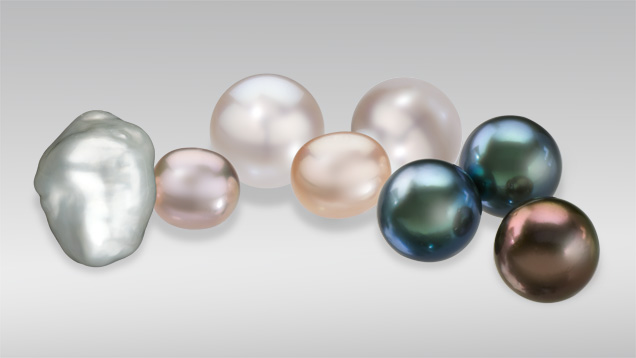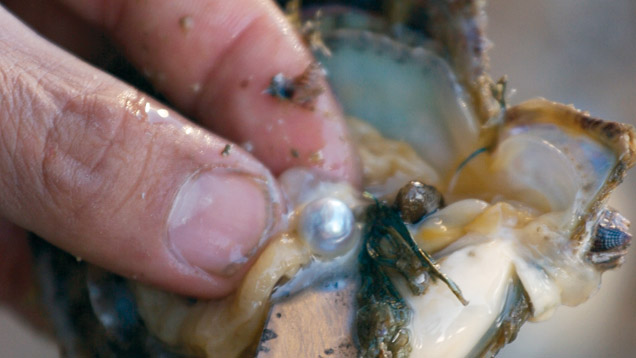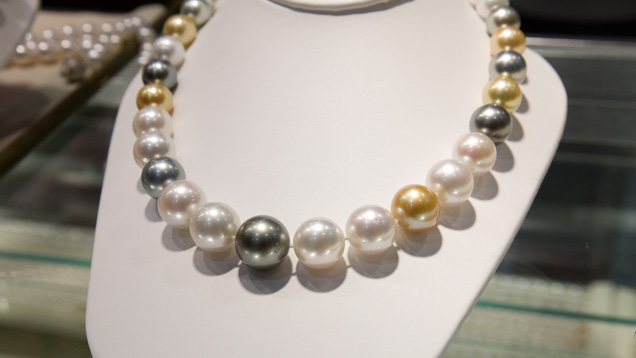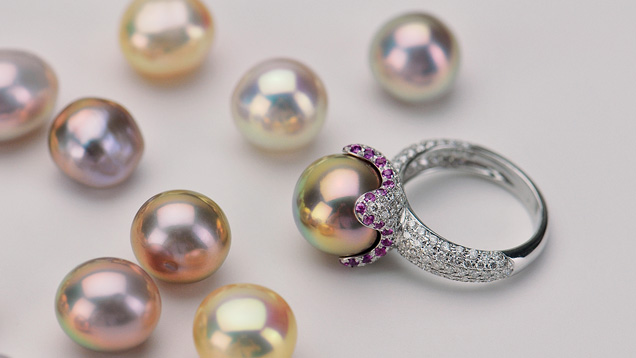Pearl Description

Perhaps the best-loved gems of all time, pearls—both natural and modern cultured pearls—occur in a wide variety of colors. The most familiar colors are white and cream (a light yellowish brown). Black, gray, and silver are also fairly common, but the palette of pearl colors extends to every hue. The main color, or bodycolor, is often modified by additional colors called overtones, which are typically pink (sometimes called rosé), green, purple, or blue. Some pearls also show the iridescent phenomenon known as orient.


Pearl—natural or cultured—is a US birthstone for June, together with alexandrite and moonstone.
Natural Pearls vs. Cultured Pearls
Natural PearlsNatural pearls form in the bodies, or mantle tissue, of certain mollusks, usually around a microscopic irritant, and always without human help of any kind.
Cultured PearlsThe growth of cultured pearls requires human intervention and care. Today, most of the mollusks used in the culturing process are raised specifically for that purpose, although some wild mollusks are still collected and used.

To begin the process, a skilled technician takes mantle tissue from a sacrificed mollusk of the same species and inserts a shell bead along with a small piece of mantle tissue into a host mollusk’s gonad, or several pieces of mantle tissue without beads into a host mollusk’s mantle. If a bead is used, the mantle tissue grows and forms a sac around it and secretes nacre inward and onto the bead to eventually form a cultured pearl. If no bead is used, nacre forms around the individual implanted mantle tissue pieces. Workers tend the mollusks until the cultured pearls are harvested.
Pearl Types
There are four major types of cultured whole pearls:
Akoya Cultured PearlsAkoya cultured pearls are the most familiar type of saltwater cultured pearl to most people in the U.S and other western markets. Many customers think of white or cream colored akoyas as the classic pearl used for jewelry, especially single-strand necklaces. Japan and China both produce akoya cultured pearls.
South Sea Cultured PearlsAustralia, Indonesia, and the Philippines are leading sources of these saltwater cultured pearls. South Sea cultured pearls can be white to silver or golden, depending on the type of oyster. Their large size and thick nacre, due to a long growth period, plus their limited critical growing conditions are all factors contributing to their value.
Tahitian Cultured PearlsCultivated primarily around the islands of French Polynesia (the most familiar of these is Tahiti). These saltwater cultured pearls, sometimes referred to as black pearls, have a wide color range. They might be gray, black or brown, and they can have blue, green, purple or pink overtones.
Freshwater Cultured PearlsFreshwater cultured pearls are the most commonly produced pearls and they are one of the most popular pearl types among shoppers and jewelry designers. This is due to their remarkable range of sizes, shapes and colors, plus their commercial availability at lower price points. They are usually cultured in freshwater lakes and ponds, often with many pearls grown in one oyster. China is the leading source for freshwater cultured pearls.





